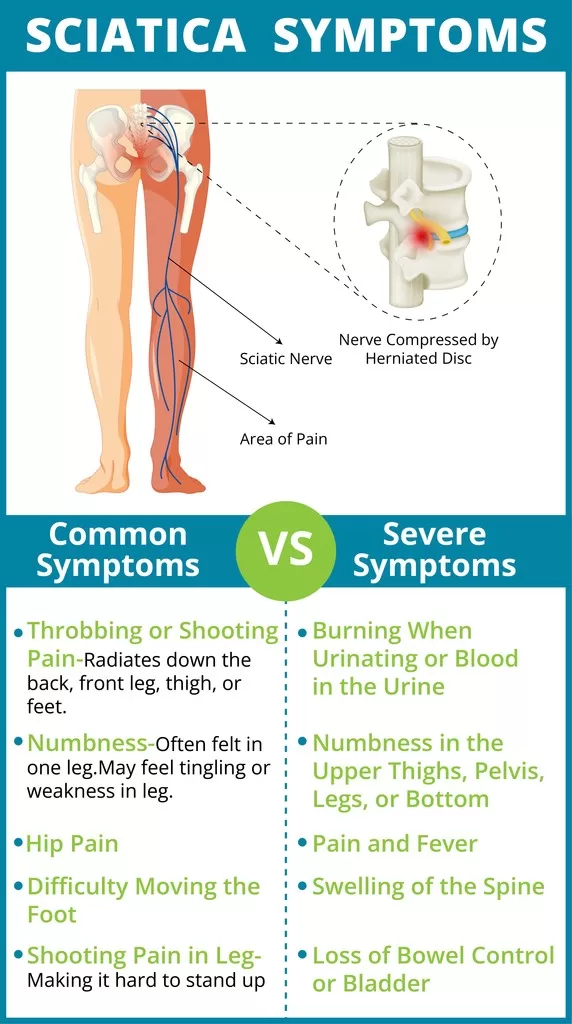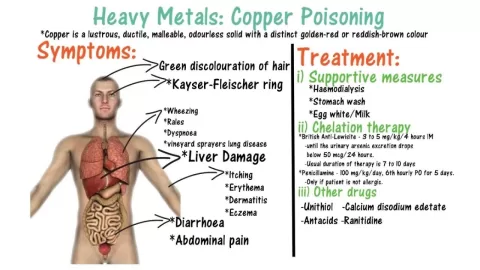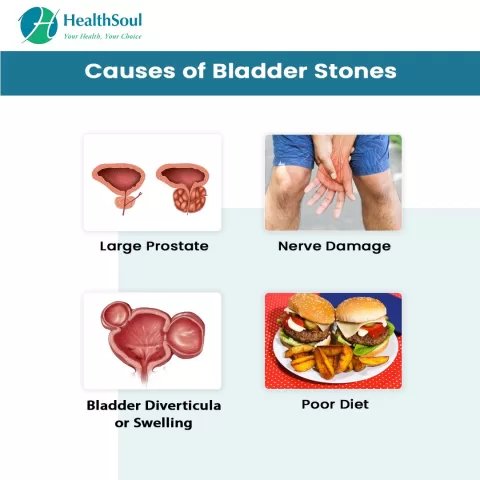Sciatica symptoms can significantly impact the quality of life, often manifesting as debilitating pain that travels along the sciatic nerve, the longest nerve in the human body. Typically originating from lower back issues, sciatica pain can radiate down the hips and into the legs, leading to sensations of numbness, tingling, or even muscle weakness. Understanding sciatica symptoms is crucial for effective treatment and management, as recognizing the signs early can lead to timely interventions. Many who experience these symptoms may find their daily activities hindered, making sciatica relief a priority for improving mobility and overall wellbeing. In this guide, we will engage in a detailed exploration of sciatica symptoms, causes, treatments, and strategies to regain control over the pain.
Often referred to as lumbar radiculopathy or nerve root pain, sciatica encompasses a range of discomforts that arise from irritations of the sciatic nerve pathways. Individuals seeking relief may experience varying degrees of severity and duration, as the symptoms can stem from different underlying issues such as herniated discs or spinal stenosis. Comprehending the nuances of these symptoms is essential for both patients and healthcare professionals tasked with providing appropriate sciatica treatment. This comprehensive understanding not only aids in accurate diagnosis but also empowers individuals to make informed decisions about their healthcare journey. By delving into the mechanisms and manifestations of nerve pain, we can illuminate pathways to effective management and enhance life quality for those affected.
Understanding Common Sciatica Symptoms
Sciatica symptoms can vary significantly from person to person, presenting a unique set of challenges for each individual. The most recognizable sign is a sharp, shooting pain that begins in the lower back and travels down the leg, often increasing with activities such as sitting or standing for extended periods. Many people report experiencing a burning sensation along their leg, which can be severely distracting and impair everyday activities. Additionally, some may encounter numbness or tingling, often described as a “pins and needles” feeling, that can extend into the foot.
Recognizing these symptoms early is crucial for effective treatment of sciatica pain. Another common issue that arises in conjunction with sciatica is leg weakness, which can make even simple movements challenging. The severity and nature of the symptoms can differ based on the underlying cause of the nerve irritation or compression. For instance, individuals with a herniated disc might experience more severe pain and neurological symptoms compared to those with muscle tightness related to pseudo-sciatica.
Exploring the Causes Behind Sciatica
Understanding the underlying causes of sciatica is essential for effective management. Herniated discs and spinal stenosis are among the most common contributors, as they directly impact the sciatic nerve’s pathway. When the intervertebral discs degenerate or bulge, they can put pressure on the surrounding nerves, resulting in intense nerve pain. Other factors such as degenerative disc disease and injuries from accidents also play critical roles in the development of sciatica symptoms, necessitating a thorough evaluation by healthcare professionals.
Moreover, lifestyle choices, particularly prolonged sitting, can aggravate sciatica symptoms. Sedentary behavior weakens the muscles supporting the spine, leading to increased pressure on the nerve roots originating from the spine. Awareness of these causes not only aids in treating existing symptoms but also emphasizes the importance of routine physical activity and ergonomic adjustments in everyday life to prevent the onset of sciatica.
Treatment Options for Effective Sciatica Relief
The pathway to sciatica relief often starts with a comprehensive evaluation by a healthcare provider to formulate an effective treatment plan. Initially, physical therapy is usually recommended as the first line of defense, aiming to enhance strength and flexibility in the back and core muscles. Moreover, anti-inflammatory medications can play a significant role in alleviating pain and reducing inflammation caused by nerve irritation.
For persistent sciatica symptoms that do not respond to conservative treatments, corticosteroid injections might be proposed to provide temporary pain relief. In severe cases, surgical intervention, such as a discectomy or laminectomy, might be necessary to alleviate pressure on the affected nerve. Each treatment option should be tailored to the individual’s specific symptoms and lifestyle, emphasizing the necessity of consulting healthcare professionals for optimal outcomes.
Recognizing and Managing Sciatica Symptoms Early
Early recognition of sciatica symptoms can profoundly influence a patient’s journey to recovery. By identifying issues such as numbness, tingling, or persistent pain, individuals can seek prompt medical advice and explore tailored treatment plans that might include physical therapy and lifestyle changes. Understanding that sciatica is not simply back pain but a symptom of deeper issues allows individuals to avoid misdiagnoses and expedite their journey to pain relief.
Moreover, maintaining regular communication with healthcare providers about any changes in symptoms is crucial for effective management. Individuals suffering from sciatica should prioritize preventive measures including routine exercise, maintaining good posture, and engaging in stretching routines tailored to the needs of their body. This proactive approach not only helps alleviate current symptoms but also minimizes the risk of recurrence.
The Role of Lifestyle Changes in Sciatica Management
Lifestyle changes play a pivotal role in managing sciatica symptoms and preventing future flare-ups. Incorporating regular physical activity is essential; not only does it strengthen the muscles supporting the spine, but it also enhances flexibility. Engaging in low-impact exercises like swimming or walking can reduce nerve pain while promoting overall wellness. Additionally, ergonomic adjustments at workstations can significantly mitigate the risk of prolonged sitting-related sciatica flare-ups.
Besides exercise, weight management is vital for those suffering from sciatica, as extra weight can contribute to increased pressure on the spine and nerves. Moreover, adopting a balanced diet rich in anti-inflammatory foods can aid in reducing both chronic pain and inflammation associated with sciatica. By prioritizing these lifestyle changes, individuals can empower themselves to manage their symptoms more effectively and improve their quality of life.
Frequently Asked Questions
What are the common symptoms of sciatica pain?
Common symptoms of sciatica pain include sharp or shooting pain that radiates from the lower back down into the legs. Patients may also experience numbness, tingling sensations, leg weakness, and a burning sensation along the sciatic nerve. Understanding these sciatica symptoms is crucial for effective diagnosis and treatment.
How can I identify if I have sciatica symptoms?
Identifying sciatica symptoms typically involves recognizing the pain’s origin in the lower back and its radiating nature to the legs. Symptoms like numbness, weakness in the leg, and pain intensifying with certain activities can indicate sciatica nerve pain. Early recognition allows for prompt treatment options.
What are effective treatment options for managing sciatica symptoms?
Effective treatment options for sciatica symptoms include physical therapy, anti-inflammatory medications, corticosteroid injections, and in some cases, surgery. These strategies aim to relieve pain and address the underlying causes of sciatica pain, enhancing recovery and improving quality of life.
Can lifestyle changes help alleviate sciatica symptoms?
Yes, lifestyle changes such as regular exercise, maintaining good posture, and incorporating stretches can help alleviate sciatica symptoms. Reducing prolonged sitting and improving physical activity levels may prevent sciatica nerve pain from worsening or recurring.
When should I consult a doctor about my sciatica symptoms?
You should consult a doctor about your sciatica symptoms if you experience persistent pain, severe weakness, or loss of bowel or bladder control. Seeking medical advice ensures you receive an accurate diagnosis and a comprehensive treatment plan for your sciatica treatment needs.
| Key Points | Description |
|---|---|
| What is Sciatica? | Pain along the sciatic nerve, which is the longest nerve in the body, branches from the lower back down each leg. |
| Common Symptoms | Sharp pain, numbness or tingling, leg weakness, burning sensation, and pain that intensifies with certain activities. |
| Types of Sciatica | True Sciatica (due to nerve injury) and Pseudo-Sciatica (due to muscle tightness or pelvic issues). |
| Common Causes | Herniated discs, degenerative disc disease, spinal stenosis, injuries, and prolonged sitting. |
| Treatment Options | Physical therapy, anti-inflammatory medications, corticosteroid injections, and surgery for severe cases. |
| Importance of Recognizing Symptoms Early | Early detection allows for tailored treatments and prevents prolonged discomfort. |
Summary
Sciatica symptoms can greatly impact an individual’s quality of life, making it crucial to understand their nature and implications. By recognizing these symptoms early, patients can seek prompt medical attention and tailor their treatment effectively. Commonly manifested as sharp pain, numbness, or even leg weakness, sciatica symptoms often arise from underlying conditions that warrant a thorough evaluation. Managing these symptoms through a combination of physical therapy, medication, and lifestyle changes can lead to significant relief. Staying informed about the latest research and treatment options helps individuals navigate their sciatica journey with confidence, ensuring a better quality of life.
The content provided on this blog (e.g., symptom descriptions, health tips, or general advice) is for informational purposes only and is not a substitute for professional medical advice, diagnosis, or treatment. Always seek the guidance of your physician or other qualified healthcare provider with any questions you may have regarding a medical condition. Never disregard professional medical advice or delay seeking it because of something you have read on this website. If you believe you may have a medical emergency, call your doctor or emergency services immediately. Reliance on any information provided by this blog is solely at your own risk.








